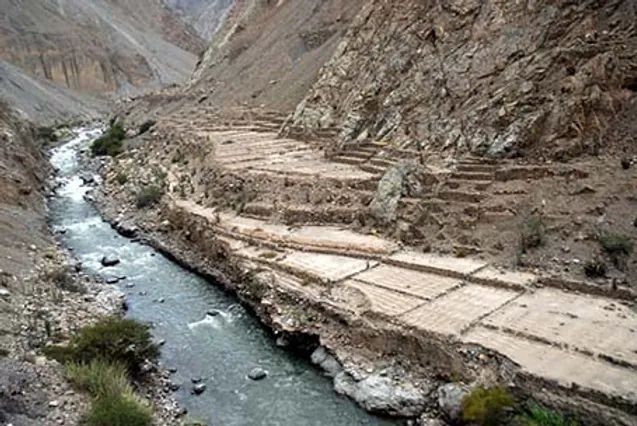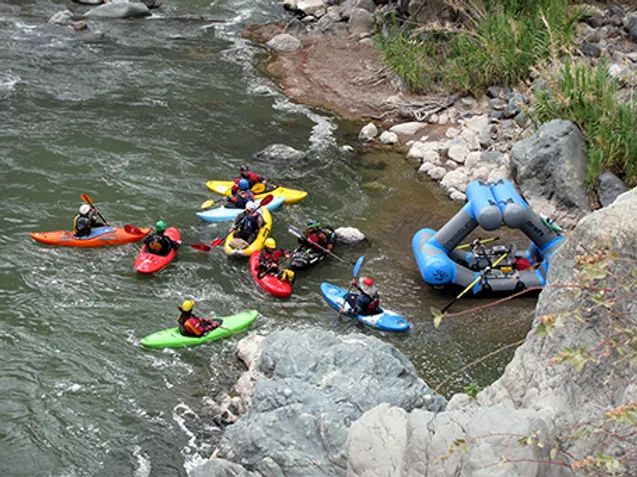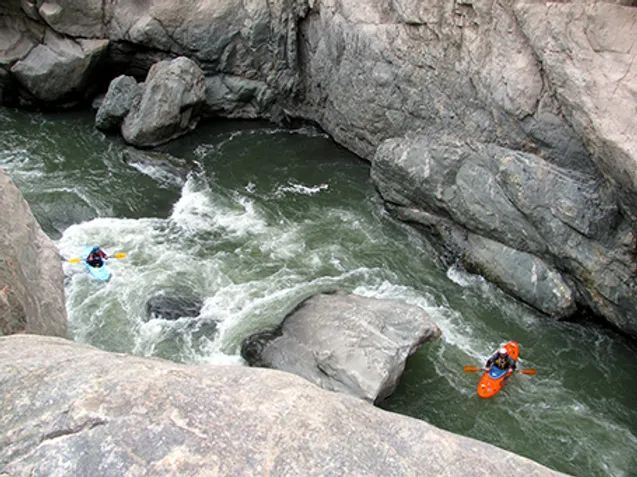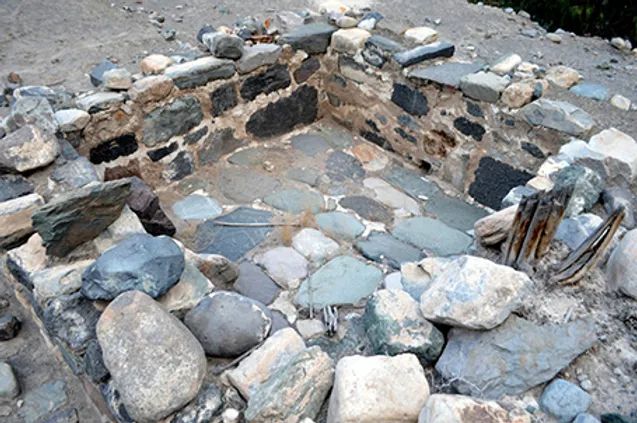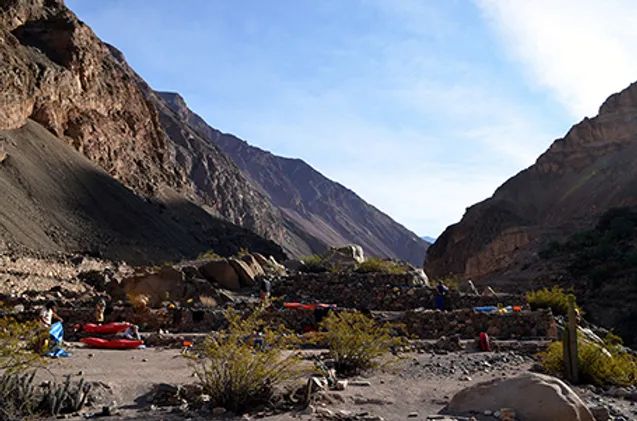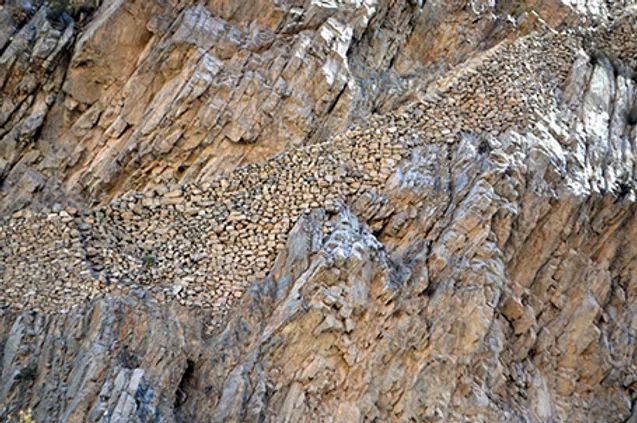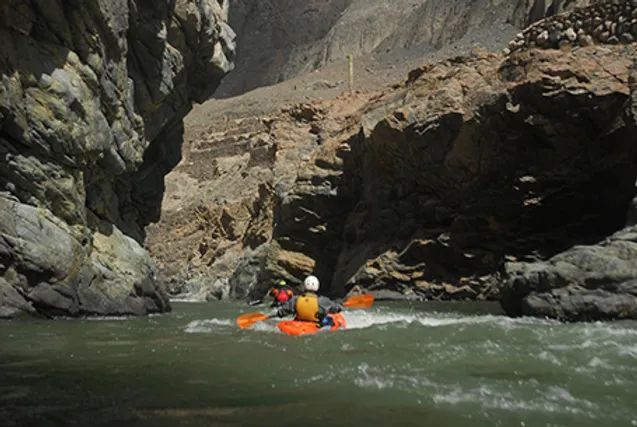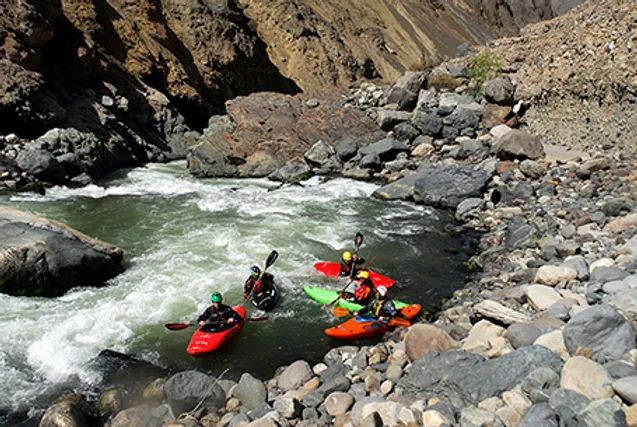Dates: March to November
Price: $1990 per person
Highlights
- Explore one of the deepest canyons in the world.
- Hike 14 miles on an ancient Inca Trail.
- Experience 100+ miles of Class IV-V rapids.
- Discover untouched Inca ruins.
- Camp on Inca terraces amid breathtaking views.
At the top of the Earth, in a place close to heaven in the domains of condor, lives a magical idyll: the deepest and most colossal canyon and the mighty Silver River falling from immense glaciers. Born as tears in small streams of life, bathing on its way many small surrounding villages, forming a fertile valley that extends like a green carpet throughout numerous communities.
The Cotahuasi River is located in southern Peru and is renowned for being one of the deepest canyons in the world. It offers breathtaking scenery, ancient Inca ruins, and thrilling whitewater rafting opportunities. The river flows through a remote and rugged landscape, making it a prime destination for adventurers seeking a unique and challenging experience. The surrounding area is rich in history and culture, with traditional villages and archaeological sites that provide a glimpse into Peru’s past.
Explore the living past while thundering down one of the wildest rivers in the world! Join us for a 14-mile hike on an ancient Inca Trail deep into the earth, then enjoy the adrenaline rush during a 6-day Class V raft trip down a steep river through a gorgeous canyon. If you are looking for a real adventure and true expedition, this is it! Pura Vida Expeditions ran the first descent of the Cotahuasi. This river features some of the most continuous runnable whitewater on earth, a fact recognized by Outside magazine when they covered the trip for their December 2001 issue.
Sample Itinerary
Day 1: Lima to Arequipa
Arrive in Lima, Peru and take a connecting flight to Arequipa. Explore this beautiful town hewn out of white stone and spend your first night at the Hotel Del Lago. Meals: On your own.
Day 2: Journey to Colca Valley
Afternoon departure as we start our drive to Cotahuasi canyon. We drive through many small Peruvian villages and pass through beautiful countryside. We eat dinner in the town of Aplao, located 3 hours from Arequipa, and camp at a developed campsite in the Colca valley. Meals: B, L, D.
Day 3: Arrival in Cotahuasi
We take a 7-hour journey by road to Cotahuasi, crossing over a 15,500-foot pass before dropping down to the village. Along the way, we get incredible views of Mountain Coropuna (21,000 ft). Cotahuasi is a remote high Andean village far removed from everyday crowded Peruvian life. You’ll sense that you have discovered Shangri La when walking into this tranquil and clean village. Explore the narrow streets and the masonry work obviously descended from the Incan culture, enjoy the hot springs, and have dinner. Stay at La Sipia Inn. Meals: B, L, D.
Day 4: Inca Trail Hike
The mules get loaded with our personal gear as we start our 10-hour hike around the Sipia Falls into the canyon. We follow ancient Inca trails 3,000 feet above the river level and then descend to the start of our river journey. This hike is one of the highlights of the trip. The views from the trail are dramatic, and the trail itself is an engineering wonder. Our hike ends at a footbridge called Valinga. Meals: B, L, D.
Day 5-10: Cotahuasi River Rafting
These six days will be spent rafting through the Cotahuasi canyon, which is twice as deep as the Grand Canyon and, according to the Peruvian government, the deepest canyon in the world. Another highlight of the Cotahuasi are the Inca ruins scattered throughout the canyon, some of which are yet to be fully explored.
Aside from the archaeological treasures, you’ll enjoy more than 100 miles of continuous Class IV whitewater, estimated at 1,500 CFS. The river flows 221 miles, from 12,000 feet up in the Andes to the Pacific Ocean. We will encounter three Class V rapids and a few rapids that we may have to line the boats around.
Each night we will camp on Inca terraces and explore the ruins. Please remember that proper etiquette regarding archaeological sites is the same as all of nature: Take nothing but pictures, leave nothing but footprints. Meals: B, L, D.
Day 10: Return to Arequipa
As the Pacific Ocean breeze becomes prevalent, we know our take-out is getting close. We reach the vans, load up, and drive 2 hours to the nearest big town where we’ll have a nice sit-down meal at a restaurant before driving another 2 hours back to Arequipa. Overnight at Hotel del Lago. Meals: B, L, D.
Day 11: Departure
Leave Arequipa, fly to Lima, then back home—or on to your next adventure! Meals: B.
What’s Included
- All transfers
- All meals as indicated in the itinerary (B: Breakfast, L: Lunch, D: Dinner)
- Rafting and camping equipment
- Double occupancy tents
- Professional guides
- Hotel in Arequipa
- Wranglers
What’s Not Included
- International airfare
- Airport taxes
- Sleeping bag and pad
- Personal gear
- Personal expenses
- Gratuities for guides
